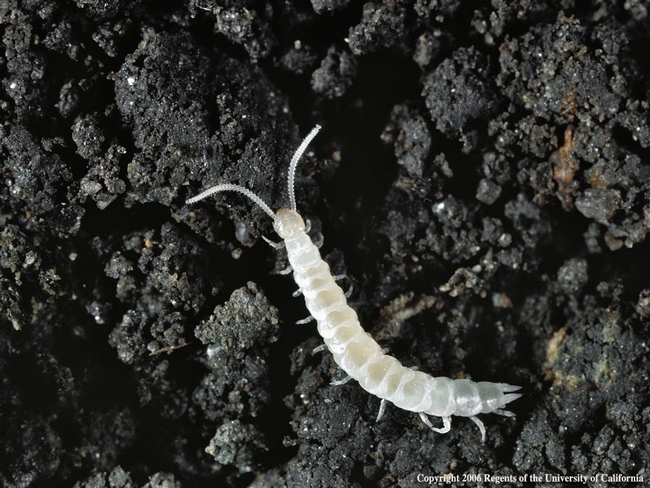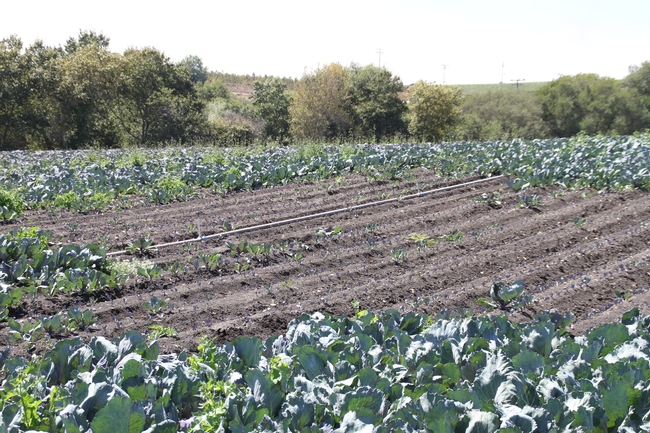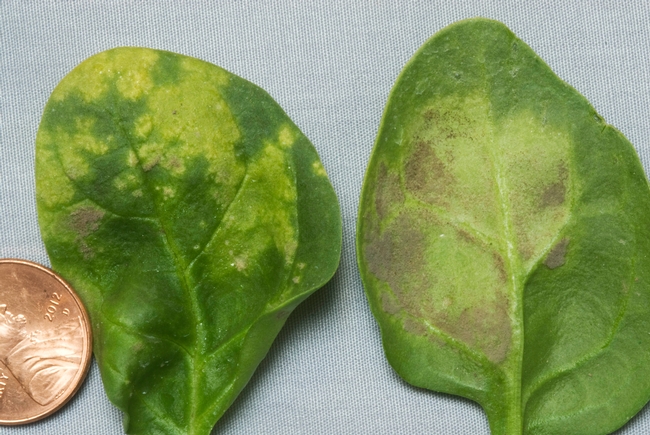- Author: Shimat Villanassery Joseph
The garden symphylan (Scutigerella immaculata) (Figure 1), a white, highly mobile, centipede-like, 1/4 inch long soil arthropod, is a serious soil pest of several high-value crops in the Central Coast of California such as lettuce, strawberry, broccoli, cauliflower, artichoke and celery. The garden symphylan feeds on roots of both direct-seeded and transplanted crops alike causing severe stunting and plant mortality. Besides feeding on the roots, they also survive feeding on organic matter, and other soil dwelling fungi. The garden symphylans use the channels created by other soil organisms such as earthworms for vertical and lateral movement through the soil profile. Their seasonal movement in the soil is also influenced by soil moisture, and temperature. Incidence of garden symphylan infestation is mostly reported in heavier or clay soils with higher organic matter content than lighter or sandy soils. The garden symphylans spend their entire life in the soil and are well adapted to the subterranean habits. They lack eyes but have long antennae and thousands of sensory hairs on the body, which possibly help taste and feel the surroundings.
The garden symphylans are primarily managed using preventative insecticide application, although other tactics such as crop rotation, planting less susceptible crops, flooding the field, reduced tillage, and conservation of beneficial organisms have been suggested. Success and effectiveness of these non-chemical tactics were constrained by several factors such as lack of fit to the current production practices, susceptible crops being grown, varied topography, and enormous population size.
It is important to remember that garden symphylans are very difficult to manage because of their behaviors such as high mobility, and their adaptations to the soil conditions. They can move to deeper soil layers when conditions are not favorable in the upper soil layers (such as high temperature or low water content). Often, garden symphylans aggregate in high densities in certain spots in the field and the damage is concentrated in those spots (Figure 2). Thus, it is very difficult to predict their incidence and plant damage in the field.
One strategy to manage garden symphylans is to determine which insecticides would repel garden symphylans in the soil. This will at least provide some control until the seedling establish in the soil. Studies were conducted to establish relative efficacy of insecticides against garden symphylan based on repellency behavior and how many died. Based on the studies, Belay, Vydate, Mustang, Lorsban, Mocap, Aza-direct Leverage and Torac showed signs of repellency to garden symphylans. Aza-direct is the only organically approved insecticide that elicited repellency. The insecticides, Capture, Vydate, Belay, and Mustang caused 44 to 95% garden symphylan dead. 100% of the garden symphylans were killed when Torac was used. Torac is not registered on any crops at this moment. These studies provide guidelines on efficacy of insecticides against garden symphylans. For further reading please click the link below to access the published article.
- Author: Lennis Arriaga
Save the Date!
University of California Cooperative Extension
Monterey County
2015 Plant Disease Seminar:
First Announcement
Wednesday, November 4, 2015
8:00 a.m. to 12:00 p.m.
**County of Monterey Agricultural Center**
Conference Room
1432 Abbott Street, Salinas, California
This seminar will focus on a broad range of topics dealing with plant pathology and pest management. Topics will include updates on plant disease and pest developments in coastal California, research findings on plant diseases, and current issues affecting growers, pest control advisors, and other agricultural professionals dealing with vegetable and strawberry crops.
Registration/sign-in is from 8:00 to 8:30. There is no fee for this meeting. Continuing education credits will be requested. Please call ahead (at least 24 hours) for arrangements for special needs; every effort will be made to accommodate full participation. For more information, contact Steven Koike (831-759-7350; stkoike@ucdavis.edu, 1432 Abbott Street, Salinas, California 93901).
Requirement from California DPR: Bring your license or certificate card to the meeting for verification when signing in for continuing education units.
- Author: Steven T. Koike
Jim Correll, University of Arkansas
Steven Koike, University of California Cooperative Extension
The 2015 spinach season has had a high level of downy mildew pressure (Photo 1). In the Yuma area of Arizona as well as the Imperial and Salinas valleys of California, outbreaks of severe downy mildew have occurred in hot spots in a number of fields. From these cases, downy mildew samples were collected and tested. The results indicate that a number of outbreaks may be caused by deviating isolates of the downy mildew pathogen that do not match the profiles of the fifteen described races. Two of the more commonly found isolates are 1014 and 19B, which are able to infect a number of the newer race 1-15 resistant varieties produced by several companies. Isolates matching the 1014 type have been recovered in both 2014 and 2015. Isolates matching the 19B type have been particularly prevalent in the Salinas area in recent months. A number of older spinach hybrids (a partial list of such cultivars includes Whale, Camaro, Caladonia, Scorpius, Shelby, Tasman, and Raccoon) have resistance to 19B type isolates.
Efforts are underway to fully characterize these deviating isolates. In addition, we have proposed to the International Working Group on Peronospora (IWGP) that isolates 1014 and 19B be included in a group ring-test to confirm the virulence of these isolates. The ring-test will provide supporting information that might result in the nomination of one or both deviating isolates for race designation. The IWGP coordinates activities to identify deviating races of the spinach downy mildew pathogen and to designate them as official races.
For growers and pest control advisors, management of downy mildew on spinach remains the same. The selection and planting of cultivars that are resistant to the pathogen remain the primary and preferred means of managing this problem. For conventional growers, timely and judicious use of fungicides is an important component of the IPM strategy. Organic producers still do not have fungicide products that are consistently effective.
Photo 1. Downy mildew causes distinct yellow lesions and purple sporulation to develop on spinach leaves.
- Author: Shimat Villanassery Joseph
Lygus bug (Lygus herperus) (Figure 1), usually a sporadic pest on vegetable crops, is now a major pest of several vegetables this year especially on celery, lettuce, and radicchio in the Salinas Valley.
On celery, the feeding injury appears as lesions toward the base of the mature stock and young foliage in the center (Figure 2-3). On lettuce and radicchio, lygus bug feeding injury appears toward the bottom mid-rib area of the leaf (Figures 4-8).
Lygus bugs are highly mobile meaning they can move from field to field until they find a resourceful food source. Perhaps, lettuce and celery are not the nutrient rich diet to lygus bugs but these crops could provide much needed moisture and refuge. High populations of lygus bug could develop on weed hosts in the unmanaged areas such as ditches, side of the roadways etc. Also, alfalfa or beans could serve as hosts. When weed plants dry out or mowed, lygus bug adults tend to leave those hosts seeking food and water elsewhere and even seek temporary refuge in the lettuce or celery fields. Those female lygus bugs settled in the vegetables not only cause feeding injury but also lay eggs. A lygus bug female can lay on average 150 eggs for its life time in an ideal laboratory conditions. This suggests that a few lygus bug females settled in lettuce or celery can develop into colonies. Any disturbance to the favorable hosts such as mowing the weeds in the unmanaged areas or mass cutting of alfalfa could trigger lygus bug adult movement. It is important that alfalfa growers pay attention when they cut the alfalfa crop. Sequential or staggered alfalfa cutting is advisable because any area wide cutting will disturb them and will cause lygus bug adults flee the alfalfa field. Maintaining the alfalfa crop succulent with adequate water and fertilizer is advisable.
Management of lygus bug involves repeated use of insecticides particularly pyrethroid insecticides and Lannate (methomyl). Among those registered insecticides on celery such as Vydate (oxamyl) and Malathion have comparatively longer pre-harvest intervals (PHIs) than pyrethroid insecticides; thus, they are used during the early phase of the plant development. Among the pyrethroid insecticides registered on vegetables, Mustang (zeta-cypermethrin), permethrins and lambda-cyhalothrin (Warrior II) are widely used. Growers restrain from using Mustang because of maximum residue level (MRLs) restrictions imposed by certain export markets. There are several generics of pyrethroid insecticides available in the market. Repeated use or exposing pyrethroid insecticides to same generation of lygus bugs may lead to insecticide resistant lygus bug populations. Lack of insecticide coverage could also result in ineffective spray results. As indicated earlier, lygus bug adults are highly mobile and they could move as the spray equipment approaches. If nymphs exist in the field, they could easily hide in the crown areas of the plant. This suggests that there could be several reasons behind inadequate control of lygus bug. Monitoring the field is critical to reduce the establishment of lygus bug colony in the field for timely management.
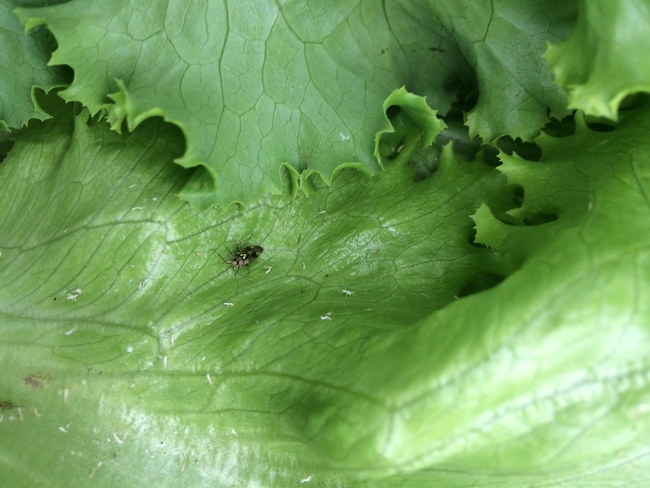
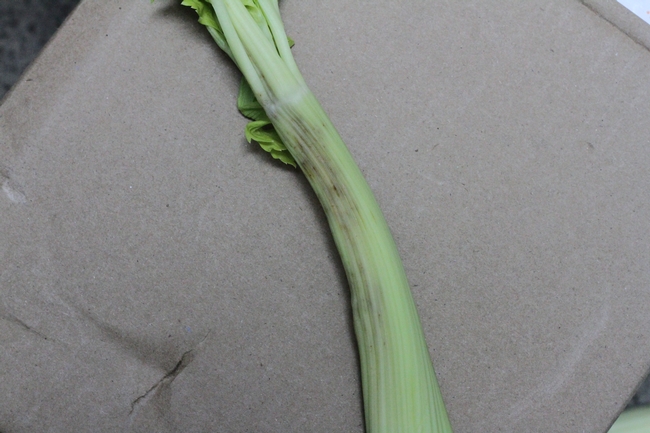
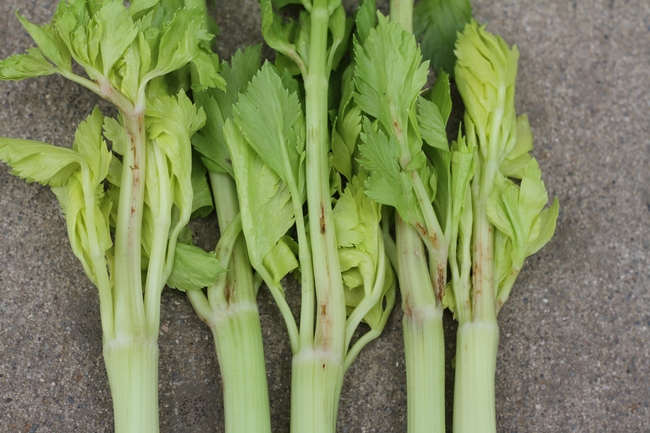
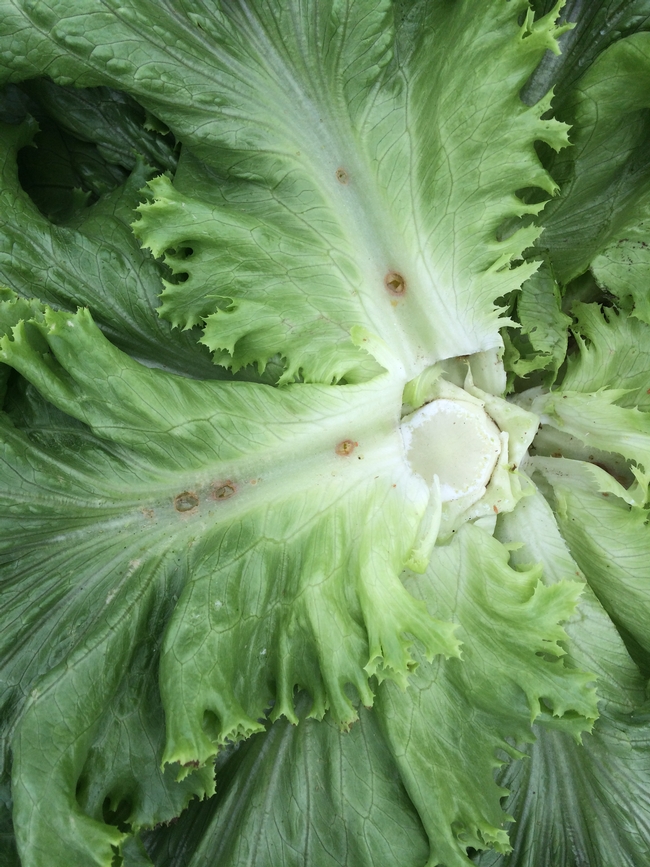
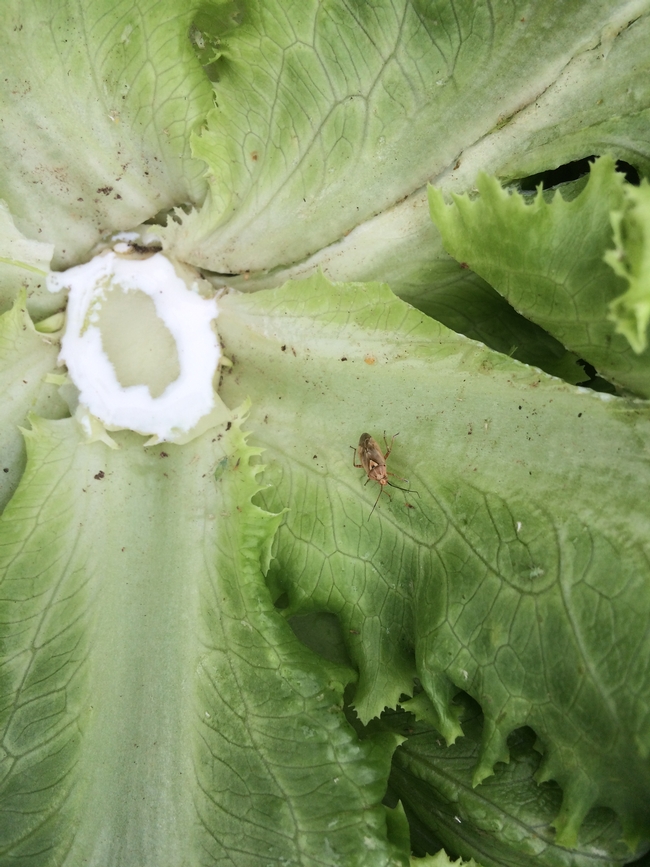
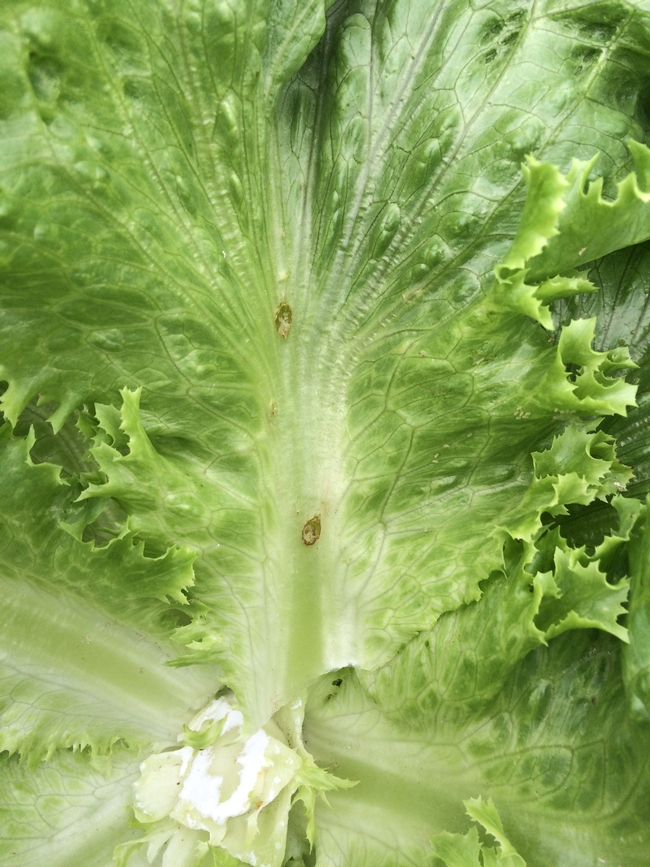
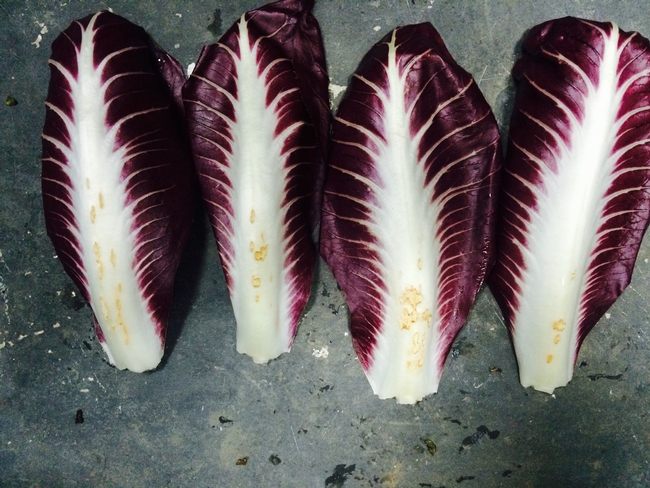
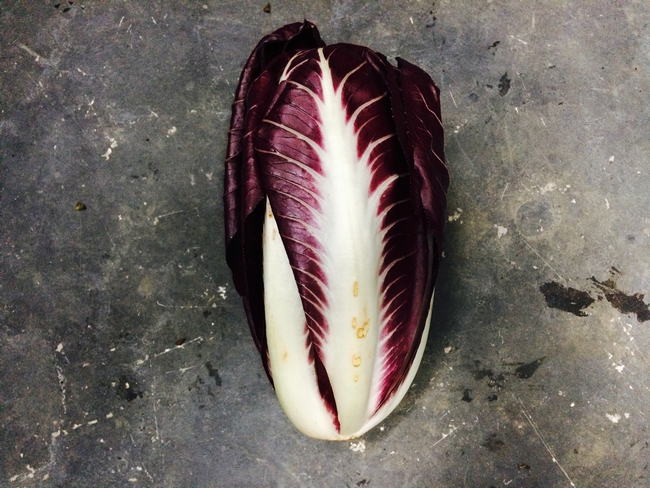
- Author: Cheryl Reynolds, UC Statewide IPM Program
As summer continues to heat up, keep in mind that regulations remain in effect to reduce the volatile organic compounds (VOCs) that can be emitted into the atmosphere by pesticides and other harmful chemicals and contribute to the amount of ozone or smog in the environment.
Calculators from the Department of Pesticide Regulation (DPR) that determine the VOC emissions from fumigant and non-fumigant pesticides before application are available to help growers, pest control advisers, and pesticide applicators comply with the regulations. The UC Statewide Integrated Pest Management (IPM) Program provides a link to these calculators from each of the treatment tables in the UC Pest Management Guidelines. Click on the Air Quality – Calculate emissions button.
Take steps to reduce VOCs. Avoid emulsifiable concentrate (EC) formulations as they release the highest VOC emissions. Pesticide control advisers and growers can also reduce VOC emissions by employing IPM practices such as using resistant varieties, traps, exclusion, and biological control. When using pesticides, spot-treat and seek low-emission materials. Solid formulations, such as granules or powders, are best.
Check the fact sheet on the DPR web site for the most up-to-date-information on VOC restrictions and regulations.


